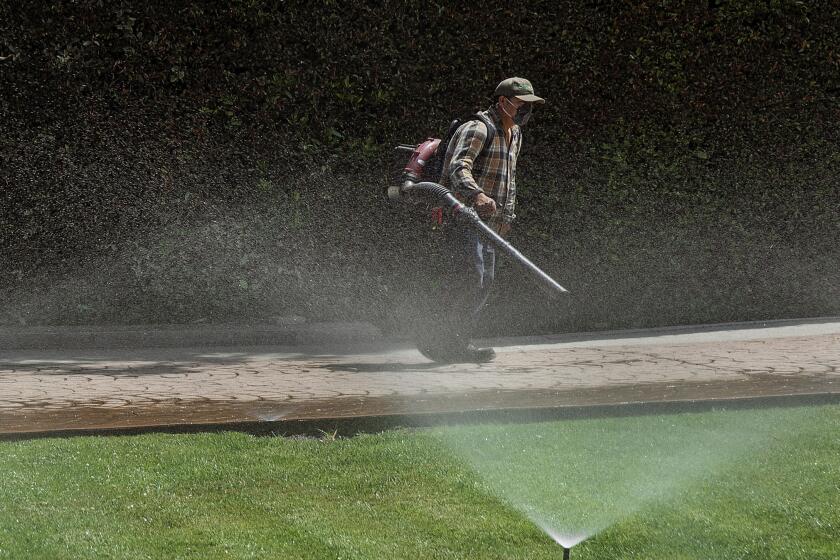An End to Cold May Provide Opportunity to Plant, Prune
- Share via
It looks as if the weather is going to give us gardeners a break this weekend. For the first time in weeks it may be warm enough to actually work in the garden without numb hands--and dry enough to dig, but don’t be surprised to see a lot of pleasant, sunny weekends during January (nights, however, usually remain cold, and frosts are predicted this weekend).
This is historically a sunny and often warm month, while February is historically our rainiest month.
January is usually a long lull between Pacific storms, but this new year could be different, just as the last two months have been a departure from the past.
Friends tell me that their gardens on the east side of town have been looking like winter wonderlands in the early morning with everything covered by frost, and even on the coastal side of town it has been cold, cold, cold and wet enough to forget about watering.
January is the month to plant and care for roses, and early birds might want to get started this weekend if the weather holds. Nurseries are busy clearing out their Christmas fare to make way for all the bare-root roses, but many won’t be fully stocked until next weekend.
Fruit trees, grapes and berries are also best planted in January, but these too have yet to arrive at many nurseries, so you may want to wait another week.
Roses should be pruned this month, but if you live where any kind of frost is possible, you should wait until the weekend of the 16th, according to Clair Martin, curator of the Huntington rose gardens. It takes roses about six weeks to leaf out after pruning, and beginning on the 16th puts them safely past the time we might get frosts. Frosts, even light ones, can damage the new growth on roses.
A good idea would be to attend one of the rose pruning demonstrations this weekend, because pruning roses is different in Southern California’s mild climate, different from what you’ll find in books on the subject. The first of the demonstrations is offered by Clair Martin today at the Huntington Botanic Garden, 1151 Oxford St., San Marino, at 1:15 and again at 2:15.
Also today, from 9 a.m. to 1 p.m., and Sunday, from 10 a.m. to 1 p.m., are ongoing pruning demonstrations at Balboa Park Rose Gardens on Park Boulevard, just east of the Naval Hospital. These are sponsored by the San Diego Rose Society.
There will be many others, and next weekend we’ll list them.
Frosts have already damaged some other plants around Southern California, and the best advice here is to do nothing until mid-March, when the danger of further frosts should be safely past. Right now, do not cut back any damaged growth because it will only encourage new growth, and new growth is the most easily frosted.
Winds have also been a problem the last few weeks, and here is something you can take care of right away: the proper staking of trees.
Many young trees were snapped in half by the strong winds of recent weeks, even a few that were tied directly to sturdy stakes. The problem here is that they were tied directly to the stakes.
The University of California has spent a lot of time researching how to stake trees, and though the work was done many years ago, the word has still not gone out sufficiently.
Trees should never be tied directly to their stakes. Instead the stakes should be to either side of the tree, about a foot away, and the tree tied between them (see the illustration).
Because this is impossible in the confines of a nursery can, the stakes the tree comes with should be taken out and new ones put in the ground. Use stakes that are made of 2x2-inch lumber and sink them at least 18 inches into the ground.
Tie the tree between them with the flexible plastic tape sold at nurseries. Tied this way, they can sway in every breeze but not so far as to break in a wind.
This constant swaying action is important, because it is much like exercising a human arm. If you are unable to move your arm, it never develops any strength; if you can move it, it does.
Ditto with a tree trunk. They must be able to move or they will never become strong enough to resist any kind of wind. It is a good bet that most of the trees--large or small--that broke in the recent winds were not properly staked when young. I even saw one that had snapped in half and had the stake inside it. It has been tied so closely to its stake that the tree grew right around it.
Tied between two stakes, the tree is free to move and develop the strength needed to resist the occasional strong wind.






